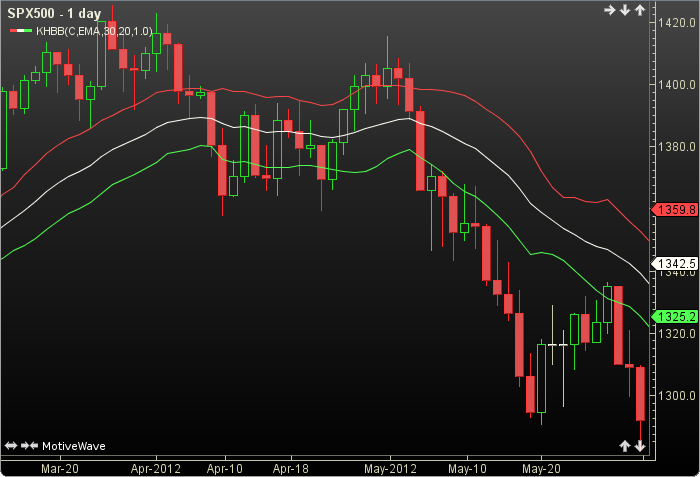Kirshenbaum Bands
The Kirshenbaum Bands were authored by Paul Kirshenbaum. Their range is based on standard error as calculated from a hypothetical linear regression line. This range is added to and subtracted from an exponential moving average of the price to produce a top and a bottom band. The user may change the input (close), method (EMA) and period lengths. This indicator’s definition is further expressed in the condensed code given in the calculation below.

How To Trade Using Kirshenbaum Bands
The Kirshenbaum Bands may be used in conjunction with other studies. No trading signals are calculated for this indicator.
How To Access in MotiveWave
Go to the top menu, choose Study>Bands>Kirshenbaum Bands
or go to the top menu, choose Add Study, start typing in this study name until you see it appear in the list, click on the study name, click OK.
Important Disclaimer: The information provided on this page is strictly for informational purposes and is not to be construed as advice or solicitation to buy or sell any security. Please see our Risk Disclosure and Performance Disclaimer Statement.
Calculation
//input = price, user defined, default is closing price
//method = moving average (ma), user defined, default is EMA
//period1 = user defined, default is 30
//period2 = user defined, default is 20
//noSdDev = number of standard deviations, user defined, default is 1
//stdErr = standard error, index = current bar number
ma = ma(method, index, period1, input); sdErr = stdErr(period2, index, input); topBand = ma + (sdErr * noSdDev); bottBand = ma - (sdErr * noSdDev);
